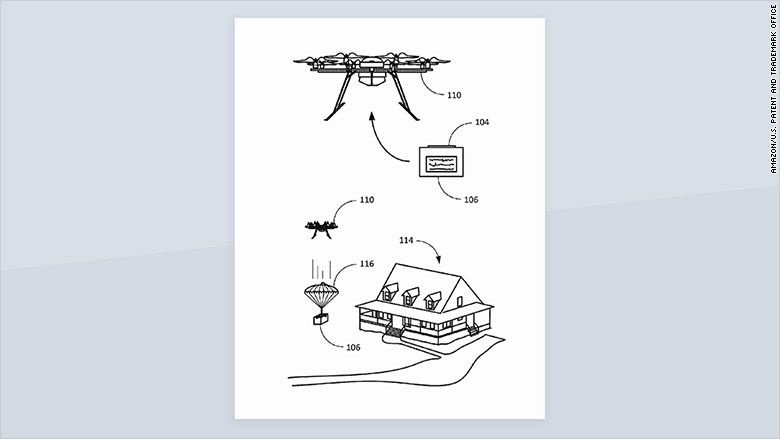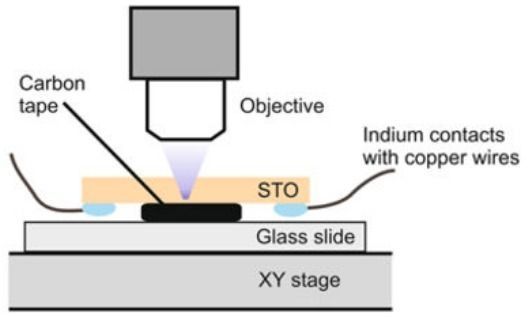Page 10174
Aug 5, 2017
This FDA Approved Drug Could Permanently Repair Brain Damage in Stroke Victims
Posted by Shane Hinshaw in categories: biotech/medical, neuroscience

- Using a drug already approved for clinical trials, researchers were able to reduce brain damage and boost the growth of new brain cells in mice suffering from strokes.
- The research offers new hope to those dealing with the aftermath of strokes, which are the fifth leading cause of death in the United States.
Researchers from the University of Manchester have developed a new treatment that could limit the damage caused by strokes and also promote repair in the affected area of the brain. What’s more, the drug they’re using has already been clinically approved.
Aug 5, 2017
How to turn a crystal into an erasable electrical circuit
Posted by Sean Brazell in categories: electronics, physics

Washington State University (WSU) physicists have found a way to write an electrical circuit into a crystal, opening up the possibility of transparent, three-dimensional electronics that, like an Etch A Sketch, can be erased and reconfigured.
Ordinarily, a crystal does not conduct electricity. But when the researchers heated up crystal strontium titanate under the specific conditions, the crystal was altered so that light made it conductive. The circuit could be erased by heating it with an optical pen.
Continue reading “How to turn a crystal into an erasable electrical circuit” »
Aug 5, 2017
“Avoiding Andromeda Strain” –NASA Identifies 25 Gaps in Our Knowledge to Guard Earth Against Alien Life & Biological Contamination“
Posted by Brett Gallie II in categories: alien life, biological
One of the greatest fears of the world’s space is a real-life Andromeda Strain, the chilling movie about a US research satellite carrying a deadly extraterrestrial microscopic organism that crashes into a small town in Arizona. A group of top scientists are hurriedly assembled in a bid to identify and contain the lethal stowaway.
Aug 5, 2017
The risk of a transhumanist future
Posted by Zoltan Istvan in categories: biotech/medical, military, sustainability, transhumanism
But a British PhD candidate has warned of the darker side of a transhumanist future.
Sociologist Alex Thomas of East London University believes that transhumanism will further enforce a societal obsession with “progress” and “efficiency” at the expense of social justice and environmental sustainability. In an article published this week in The Conversation, Thomas argues that unbridled technological progress, in which technology “become more intrusive and integrate seamlessly with the human body”, could lead to a loss of basic societal values such as compassion and a concern for the environment.
Transhumanism and advanced capitalism are two processes which value “progress” and “efficiency” above everything else. The former as a means to power and the latter as a means to profit. Humans become vessels to serve these values. Transhuman possibilities urgently call for a politics with more clearly delineated and explicit humane values to provide a safer environment in which to foster these profound changes.”
Aug 5, 2017
Tomorrow Soldier: How The Military Is Altering the Limits of Human Performance
Posted by John Gallagher in categories: military, privacy
Breakthroughs in biometric science mean future troops will fight with weapons that understand them — inside and out.
Imagine a group of volunteers, their chests rigged with biophysical sensors, preparing for a mission in a military office building outfitted with cameras and microphones to capture everything they do. “We want to set up a living laboratory where we can actually pervasively sense people, continuously, for a long period of time. The goal is to do our best to quantify the person, the environment, and how the person is behaving in the environment,” Justin Brooks, a scientist at the Army Research Lab, or ARL, told me last year.
ARL was launching the Human Variability Project, essentially a military version of the reality- TV show Big Brother without the drama. The Project seeks to turn a wide variety of human biophysical signals into machine-readable data by outfitting humans and their environment with interactive sensors.
Continue reading “Tomorrow Soldier: How The Military Is Altering the Limits of Human Performance” »
Aug 5, 2017
Is the staggeringly profitable business of scientific publishing bad for science?
Posted by Derick Lee in categories: business, science
It is an industry like no other, with profit margins to rival Google – and it was created by one of Britain’s most notorious tycoons: Robert Maxwell. By Stephen Buranyi.
Aug 5, 2017
The Age of Cyborgs Has Arrived
Posted by Klaus Baldauf in categories: bioengineering, biotech/medical, cyborgs, transhumanism
Cyborgs have arrived and are living among us. From pacemakers to bionic eyes to cochlear implants, these are all examples of biohacking.
Aug 4, 2017
The ghostly radio station that no one claims to run
Posted by Aleksandar Vukovic in category: futurism
Aug 4, 2017
US Military Eyes New Mini-Nukes for 21st-Century Deterrence
Posted by John Gallagher in categories: futurism, military
The Joint Chiefs’ vice chair says smaller-yield weapons are needed to deter the use of same.
The future of nuclear weapons might not be huge and mega destructive but smaller, tactical, and frighteningly, more common. The U.S. Air Force is investigating more options for “variable yield” bombs — nukes that can be dialed down to blow up an area as small as a neighborhood, or dialed up for a much larger punch.
The Air Force currently has gravity bombs that either have or can be set to low yields: less than 20 kilotons. Such a bomb dropped in the center of Washington, D.C., wouldn’t even directly affect Georgetown or Foggy Bottom. But a Minuteman III missile tipped with a 300-kiloton warhead would destroy downtown Washington and cause third-degree burns into Virginia and Maryland.
Continue reading “US Military Eyes New Mini-Nukes for 21st-Century Deterrence” »

















